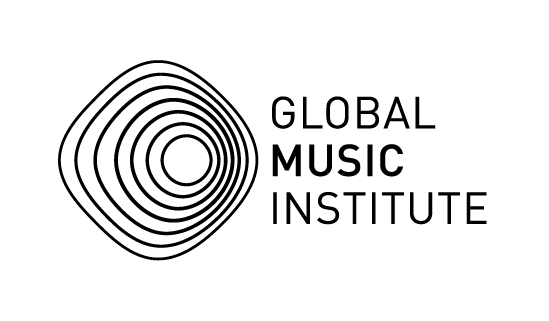
08 Jul Mental Health for Musicians- in conversation with Srijan Mahajan// Pause
The findings from research reports examining the mental health of musicians noted that most musicians seeking professional mental health care felt dismissed and/ or misunderstood due to a total lack of awareness and understanding of the trials and tribulations of their chosen professional path. The solution proposed in response to this problem was the development of specialist mental health services by artists and for artists. Recognising the need for this service in India, Srijan Mahajan and Ankur Kampani founded Pause in 2021. To learn about their mission, we spoke to seasoned drummer, producer, composer, and co-founder of Pause Srijan Mahajan.
How was Pause conceived?
During the March-October period of the pandemic I was questioning what I wanted to do from a ten to fifteen year time period for the first time since I started in the music industry in 2006 and in October 2020 I decided to move back to Delhi from Bombay. In this time, I realised that to succeed in music in India and especially in Bombay – and when I talk about success I mean financial success – I would have to compromise on some of my values that I didn’t want to compromise on. This realisation came slowly and steadily and Ankur was also going through a similar thing in his work as a founder. We were both really lost and at the time we decided to find professional help. Around August or September 2020 we started looking around for therapists and we went through almost fifteen therapists in three months but couldn’t find anybody that really understood the specific problems that we had. When we examined it further, we realised that founders, artists, and creatives are very similar in their belief systems and ways of looking at the world. From there, we started discussing the idea of providing better mental health support to people who need it like us and spoke to a family friend of ours, Aditi, who is a therapist and psychologist. She was a little wary about whether this was an actual problem in the beginning but the more we spoke about it and the more we researched, the more we realised that this was a real problem. We started working on Pause in the beginning of 2021 with Aditi and started figuring out how we can contextualise therapy and make it work for this specific group of people.
What role did Instagram play in the launch of Pause?
We started our Instagram page on a whim in September 2021 to distribute our service ahead of the launch of the app. We had no expectations and thought that if eight people saw it, it would have been great. But it really hit a chord with a few posts of ours going viral because everybody was really fragile at the time and in the span of a few weeks, we had about 200 people on our waitlist. That was weird because though we had been working with therapists, we hadn’t thought about starting services at that point in time. But since we had people onboard we decided to deliver to as many people on the waitlist as we could without compromising on our quality. We don’t move down our waitlist until we have a therapist we are convinced about.
Tell us about the app you are building
We are creating the app for two reasons. The first being that we wanted a closed ecosystem of our own because we are very concerned with data privacy and we do not want to be in a spot where there is even a slight chance of there being infringement on client data. The second part, apart from matching clients with therapists and providing therapy on the app, is to close the gap in the space of tracking progress. Progress is a very subjective thing but there are a lot of things that we can try and track to be able to provide the client a better experience. With the app we are trying to make that connection between the therapist and the user much better. For example, collecting certain data points from the user i.e. a simple check in for ten seconds a day asking how they are dealing with their specific challenge sent to the therapist will be able to give the therapist a much better insight into how the client is progressing. The feedback and that constant process is something that we want to tie in with therapy. If you fill out your trigger tracker five times this week, in your session your therapist can ask you if you want to talk about it. If the client wants to share the notes with their therapist then sure, that’s one click away and it gets added to your therapy case file which only your therapists have access to.
We want to create one place for you to go to for everything related to your mental health. We want to put a lot of cognitive behavioural therapy (CBT) based homework into the app. Additionally, if you have to do breath work for instance, there is breath work on the app for you to do. If you want to do progressive muscle relaxation, there is going to be that within the app. We are looking at creating a whole ecosystem of mental health things including self-help tools to try and incentivise people to work on themselves. If someone doesn’t need therapy, don’t do therapy but work on yourself and make sure that you have the coping mechanisms to deal with whatever life is throwing at you.
How do you go about selecting which therapists to bring on board?
All the therapists we choose go through a rigorous selection process. We look for therapists who obviously have a base level of skill, are slightly more experienced, have great interpersonal skills and are very empathetic. These are the things we look for at a basic level. The reason we look for interpersonal skills and empathetic delivery is because we know that the cohort that we are working with are supremely emotional beings. It’s just very important to provide empathetic care and provide a safe space more than anything else. The other main thing is that it’s obviously a bonus if the therapist has previously worked with founders or creatives before because the major problem we felt when we were trying to find therapists for ourselves was that a lot of people haven’t come in close contact with founders and artists and they are not able to understand what we are going through and how our brains are wired.
When we say we are training therapists we mean that the tools they use are the same but we try to put the tools together in a way that makes sense for the people that we are trying to serve over here. Also the other thing is that we are looking at providing immediate solutions in the shorter term for our clients to be able to cope with what’s going on before actually digging deep into the underlying issues. Not everybody wants to dig into the underlying issues and if they do that’s upto them but what people are looking for is immediate relief.
What has been your biggest challenge in bringing this vision to life?
There is one main challenge. When you are actually involved in something like this, it’s like a mirror being pointed at you. You are looking at all the patterns that you are trying to fix in others or that you are trying to build for and it makes you realise that “hey I have all of these things going on with me” and that is very difficult.
How do you want Pause to grow?
We are in no hurry to get to 10 000 or a million users. We just want to ensure that we provide quality. We know people who have been scarred for life after having bad therapy and it just doesn’t make sense. We are happy to take it slow. We like to take it slow and pause whenever we feel the need to pause but have urgency at the same time.
To access additional resources to support yourself or a loved one click here.
If you or someone you know is experiencing emotional distress, you can:
- Call the toll-free helpline 011-41198666 for free telephone-based counselling
- Contact a mental health support service
Interviewed and edited by Senjuti



No Comments